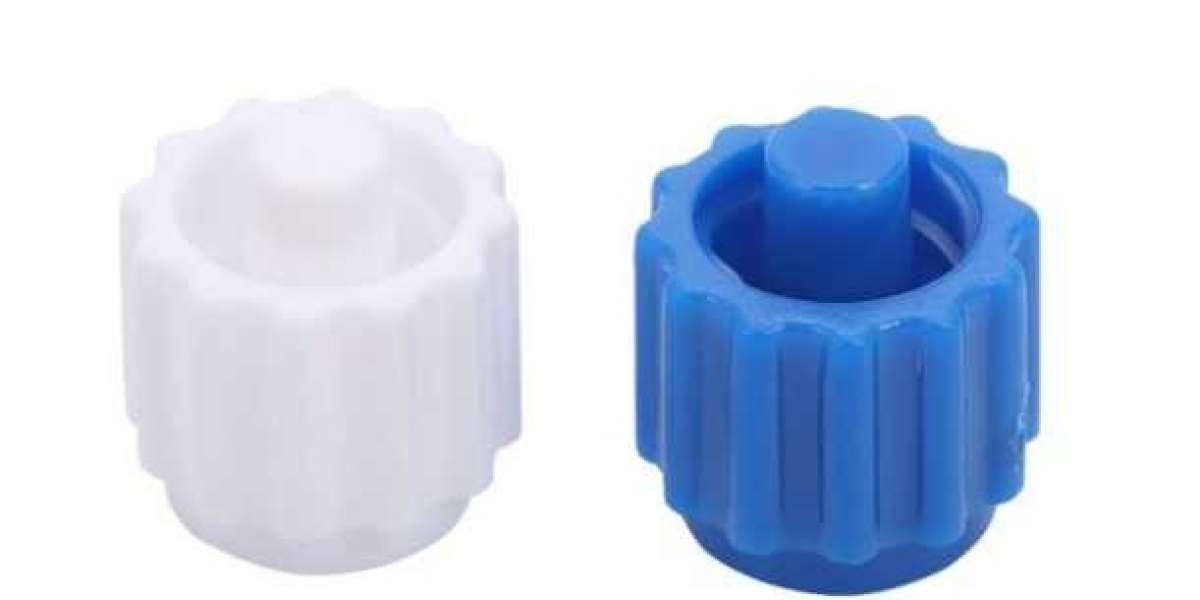One such component, often overlooked due to its size but essential in function, is the male Luer cap. These caps, part of the widely used Luer connector system, are fundamental in maintaining the integrity of fluid pathways in both medical and laboratory environments. This article explores the purpose, design, and applications of male Luer caps, and why they are indispensable across various sectors.
What Are Male Luer Caps?
Male Luer caps are small, threaded or slip-style devices designed to seal the male end of a Luer connector. The Luer system, standardized for medical fittings, allows for secure, leak-proof connections between syringes, catheters, IV tubing, and other devices used for fluid or gas transfer.
Luer caps come in two primary types: male and female. Male Luer caps fit over or into female Luer fittings, and they are specifically engineered to protect open ports from contamination, maintain sterility, and prevent leaks or spills. Made from materials like medical-grade polypropylene, polyethylene, or silicone, these caps are disposable and often used in both sterile and non-sterile formats depending on the application.
Importance in Medical Applications
In hospitals, clinics, and surgical centers, maintaining sterile conditions and secure fluid management is a top priority. Male Luer caps serve several critical functions in this context:
1. Maintaining Sterility
Once a syringe or IV line is opened or disconnected, the exposed port becomes vulnerable to microbial contamination. By capping the open female Luer connection with a male Luer cap, healthcare professionals can maintain a closed and sterile environment, greatly reducing the risk of infection.
2. Preventing Fluid Leakage
Medical devices that manage bodily fluids or medications must be tightly sealed when not in use. Male Luer caps provide a reliable barrier, preventing accidental leaks or spills which can lead to contamination, dosage errors, or hazardous exposure.
3. Enabling Safe Temporary Disconnections
Often, IV lines or other tubing systems need to be disconnected temporarily for diagnostic procedures or patient mobility. Male Luer caps allow for these disconnections to happen without compromising the cleanliness or functionality of the system when it's reconnected.
4. Protecting Medical Equipment
Sensitive instruments such as catheters, infusion pumps, and syringe pumps often have ports that need to remain clean and operational. Capping these ports with a male Luer cap when not in use ensures their readiness and longevity.
Role in Laboratory Applications
Outside of clinical settings, male Luer caps also play an essential role in laboratories, particularly in research, pharmaceutical, and biotech environments. Their use in these settings includes:
1. Sample Containment
During experiments involving fluids, reagents, or chemical solutions, maintaining sample integrity is key. Male Luer caps help seal sample containers, syringes, and tubes, protecting them from contamination and evaporation.
2. Fluid Transfer Systems
In labs that use automated fluid handling systems or chromatography setups, male Luer caps help manage pressure and flow. They can be used to temporarily seal channels or ports that are not in use without needing to dismantle the system.
3. Chemical Resistance
Many male Luer caps are designed to withstand exposure to a variety of chemicals, solvents, and temperature variations. This makes them suitable for rigorous laboratory environments where durability and chemical compatibility are crucial.
Material and Design Considerations
When selecting male Luer caps for medical or laboratory use, several factors must be considered:
- Material Composition: Caps must be made from biocompatible and non-reactive materials, especially when in contact with medications or biological samples. Polypropylene is a common choice due to its strength and chemical resistance.
- Sterility: For clinical applications, especially in invasive procedures, sterile caps are a must. They are usually packaged individually or in small groups and sterilized using gamma radiation or ethylene oxide.
- Fit and Compatibility: Luer caps must conform to ISO standards to ensure a proper fit with a wide range of Luer lock and Luer slip connectors.
- Color Coding: Some caps come in different colors for easy identification of medications, procedures, or patient-specific systems. This helps reduce the risk of mix-ups in fast-paced environments.
Sustainability and Disposal
As most male Luer caps are single-use, concerns about plastic waste have risen in recent years. Healthcare and research facilities are increasingly seeking eco-friendly solutions such as recyclable caps or materials derived from biodegradable polymers. Still, the priority remains patient safety and sterility, which often limits reuse or material alternatives.
Proper disposal of used Luer caps, especially in medical settings, is critical. They are often considered biohazardous waste and must be discarded in accordance with facility and governmental protocols to avoid environmental contamination and the spread of pathogens.
Conclusion
Male Luer caps may be small and simple in design, but their role in both medical and laboratory applications is anything but minor. From maintaining sterility and preventing leaks to safeguarding complex systems, these unassuming devices ensure that healthcare professionals and researchers can perform their duties safely and effectively. As technology and material science evolve, innovations in Luer cap design may further improve safety, efficiency, and environmental impact—ensuring they remain a vital component in the ever-advancing world of medicine and science.




